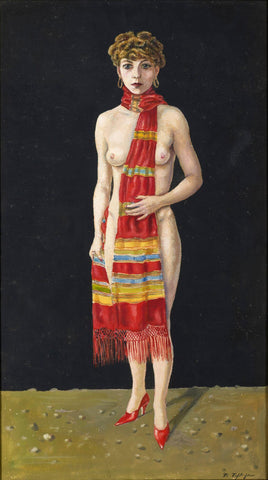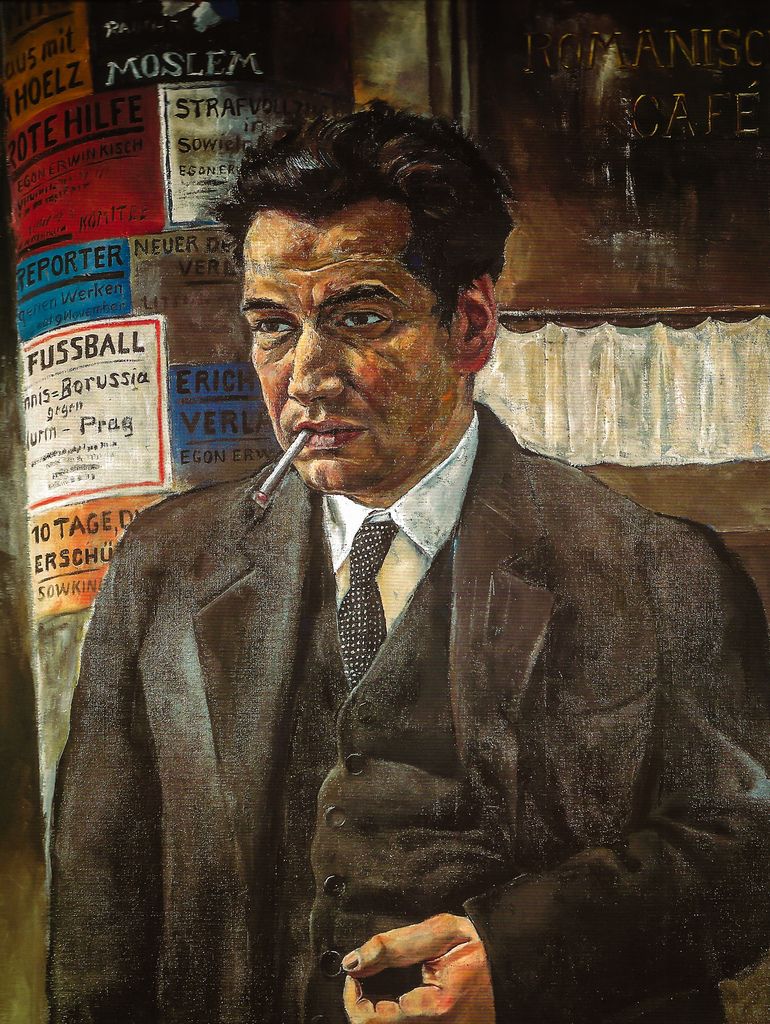
X-Large Size
Speedy – Rudolf Schlicter Large Framed Print
Framed With Mat •
20x36 inches
|
Rudolf Schlichter was a German Dada artist and a leading figure of Germany’s New Objectivity movement. Often working in watercolor, Schlichter depicted the raucous urban life of Berlin between wars, featuring prostitutes, corrupt politicians, and bohemian artists.
The artist’s attention quickly shifted to the burgeoning New Objectivity movement, culminating in his Portrait of Margot (1924), a confrontational portrait of a woman standing on the street smoking a cigarette, presaging the photojournalist style of Henri Cartier-Bresson and Robert Doisneau. In 1925, he participated in the inaugural New Objectivity group show, and by 1937 was declared a “degenerate artist” by the Nazi regime. His studio was later destroyed in an Allied bombing raid, and Schlichter died on May 3, 1955 in Munich, Germany. |
Buy Posters, Framed Art Prints, Canvas Prints & Large Art Prints

Speedy – Rudolf Schlicter Large Framed Print
Framed With Mat •
20x36 inches
Rudolf Schlichter was a German Dada artist and a leading figure of Germany’s New Objectivity movement. Often working in watercolor, Schlichter depicted the raucous urban life of Berlin between wars, featuring prostitutes, corrupt politicians, and bohemian artists. The artist’s attention quickly shifted to the burgeoning New Objectivity movement, culminating in his Portrait of Margot (1924), a confrontational portrait of a woman standing on the street smoking a cigarette, presaging the photojournalist style of Henri Cartier-Bresson and Robert Doisneau. In 1925, he participated in the inaugural New Objectivity group show, and by 1937 was declared a “degenerate artist” by the Nazi regime. His studio was later destroyed in an Allied bombing raid, and Schlichter died on May 3, 1955 in Munich, Germany.
 Rudolf Schlichter (1890-1955) was a German Dada artist and a leading figure of Germany’s New Objectivity movement.
The artist’s attention shifted from the Dadaist movement to the burgeoning New Objectivity movement, culminating in his Portrait of Margot (1924), a confrontational portrait of a woman standing on the street smoking a cigarette, presaging the photojournalist style of Henri Cartier-Bresson. Rudolph Schlichter's final works were bent towards Surrealism.
In 1937, Rudolf was declared a “degenerate artist” by the Nazi regime.
Rudolf Schlichter (1890-1955) was a German Dada artist and a leading figure of Germany’s New Objectivity movement.
The artist’s attention shifted from the Dadaist movement to the burgeoning New Objectivity movement, culminating in his Portrait of Margot (1924), a confrontational portrait of a woman standing on the street smoking a cigarette, presaging the photojournalist style of Henri Cartier-Bresson. Rudolph Schlichter's final works were bent towards Surrealism.
In 1937, Rudolf was declared a “degenerate artist” by the Nazi regime.